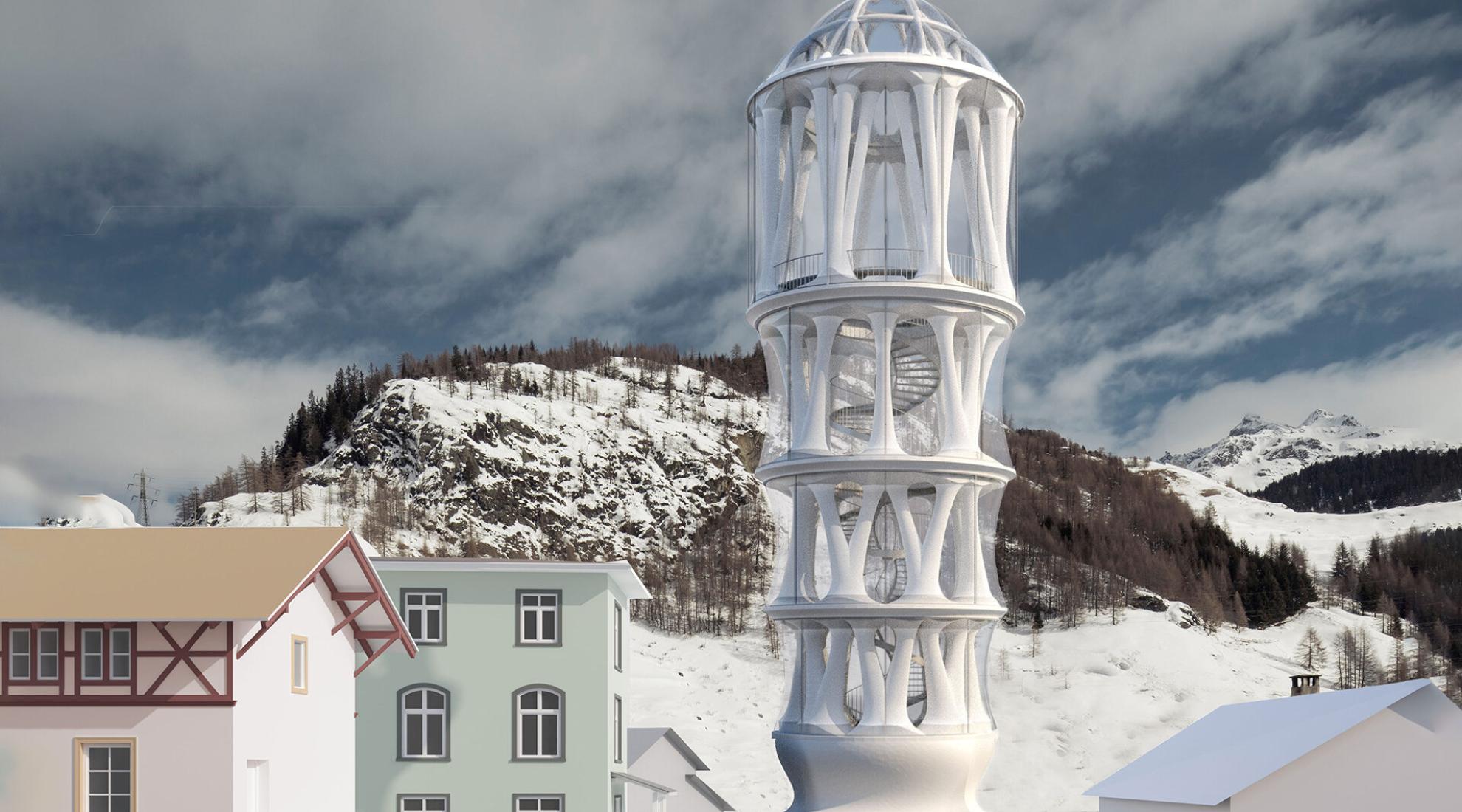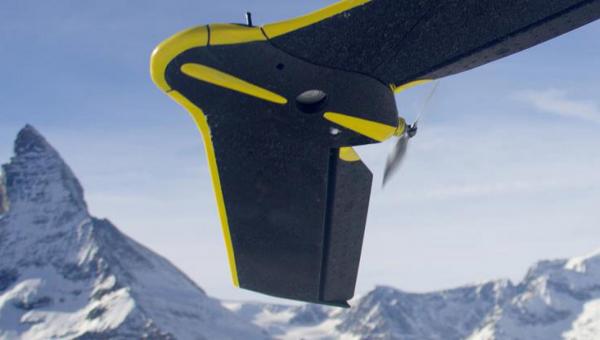A tower from a 3D printer

The world's tallest entirely digitally printed structure will be 30 metres high and will be built in the remote Swiss village of Mulegns in the spring of 2024.
Switzerland's love of heights is well known, not least thanks to the 38 Swiss mountains over 4,000 metres high. This year, a new architectural and material landmark will be added, setting a new altitude record.
In the remote mountain village of Mulegns, currently home to fewer than 20 people, researchers from ETH Zurich's Digital Construction Technologies research group are building a 30-metre-high tower for a cultural festival that at first sight could not be more out of place.
4,000 layers printed in 3D
The tower's production method is remarkable: it will be printed by industrial robots using an extrusion process at ETH Zurich and then assembled on site. The tower will consist largely of 3D-printed, organically shaped white concrete columns that will support a total of five floors. In this novel manufacturing process, a robot applies thin layers of soft concrete in succession through a nozzle. The material is soft enough to bond together to form homogeneous components, yet hardens quickly enough to support the successive layers. In total, the tower will consist of 124 3D-printed elements and 4,000 layers of concrete.

The branched columns are currently being printed in a workshop at the Department of Architecture at ETH Zurich.
A tribute to local history
The ornamental design is a reminder of the local confectionery tradition in the canton of Graubünden: many emigrants had established themselves as confectioners in the 18th century and were known for their delicate little sugar towers with elaborate decorations. Hence the name of the tower: White Tower or ‘Tor alva’.
A multifunctional cultural hotspot
The building can be used as an observation tower, a venue for events, a concert hall or a theatre for up to 45 people. In the meantime, the tower will serve as an ongoing research and showcase project for researchers, demonstrating what is now possible with computer-aided design and digital fabrication.
Fast-track to a new landmark
The Tor Alva project began in 2021 as an initiative to revitalise the decaying villages of the Julier Pass, once an important transit point between northern and southern Europe. At the beginning of February 2024, the printing process began on the first eight of 32 branching columns that will form the lower level of the building. It will take a total of 900 hours to 3D print all the elements. The tower is due to be opened to the public on 25 June 2024 in the presence of Federal Councillor Guy Parmelin and ETH Zurich President Joël Mesot. It is clear from the outset that the tower will not stand in this mountain village forever. It will be dismantled in 2029 to continue its journey elsewhere.




